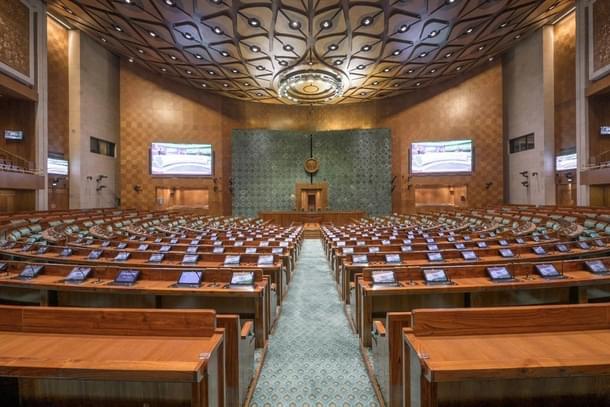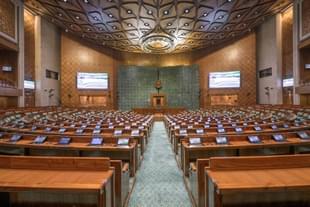Politics
New Parliament Inauguration Programme To Begin With Havan, Puja; Sengol Handover Ceremony To Follow
Swarajya Staff
May 28, 2023, 02:11 AM | Updated 02:11 AM IST
Save & read from anywhere!
Bookmark stories for easy access on any device or the Swarajya app.


India gets a New Parliament today, 28 May, 2023 and elaborate ceremonies are planned as part of the inaugural celebrations.
The programme would begin early with PM Modi being presented the Sengol (loosely translated as sceptre) by Saivite seers from Tamil Nadu. The Sengol would then be ceremoniously placed in the Lok Sabha.
The full programme for the day is expected to be this:
7:15 am- PM Modi arrives at the newly-built Parliament complex.
7:30 am- The ceremony begins with an hour-long havan and puja.
8:30 am- Prime Minister to enter the Lok Sabha chamber.
9:00 am- Installation of the Tamil Nadu ancient sceptre known as the "Sengol" close to the Speaker's chair.
9:30 am- A prayer ritual will start in the foyer. After the prayer ritual is over, the Prime Minister to leave the grounds of the Parliament.
11:30 am- Arrival of visitors and guests.
12:00 pm- Arrival of PM Modi and beginning of ceremony with National Anthem.
12:10 pm: Deputy chairman of the Rajya Sabha, Harivansh, to speak and is scheduled to read greetings from Vice President Jagdeep Dhankhar and President Droupadi Murmu.
12:17- Two short films to be screened.
12:38 pm- Speech by the leader of the opposition in the Rajya Sabha (unlikely to attend). Speech by Om Birla, Speaker of the Lok Sabha.
1:05 pm- The Prime Minister unveils a commemorative stamp and Rs 75 coin.
1:10 pm- PM Narendra Modi's speech at 1:10 PM.
2:00 pm- Ceremony ends.
What is the Sengol?
The Sengol was used in many kingdoms and empires in southern India, but especially by the Chola empire to signify transfer of seat of power from one king to another by the rajguru (state priest).
Significantly, the word Sengol, derives from the Tamil word ‘semmai’, indicates righteousness and symbolises power and justice.
During the Chola empire, the Sengol served as a ceremonial spear or flagstaff that featured elaborate carvings and intricate decorative elements.
Over time, with wide-ranging contributions of the Cholas in the fields of arts, architecture and literature, the Sengol had emerged as an iconic symbol of the Chola power.
Before the transfer of power was slated to happen on 15 August 1947, Lord Mountbatten had reportedly enquired with Congress leader Jawaharlal Nehru about the appropriate ceremony to carry out the transfer.
Nehru had then consulted respected statesman C Rajagopalachari (Rajaji), who had recommended taking cue from the Chola dynasty’s model of power transfer, where the transition from one king to another was sanctified and blessed by high priests involving the handing over of the ceremonial staff, the Sengol.
In fact, Rajaji had approached the Thiruvavaduthurai Adheenam, a Dharmic Mutt located in the Thanjavur district of Tamil Nadu for their assistance in the preparation of the Sengol.
Further, the task of crafting the commissioned Sengol, five feet in length, incorporating intricate details and symbolism with the Nandi (bull) positioned on top of the Sengol representing the concept of 'Nyaya', was handed over to the renowned jewellers Vummidi Bangaru Chetty in Chennai.





